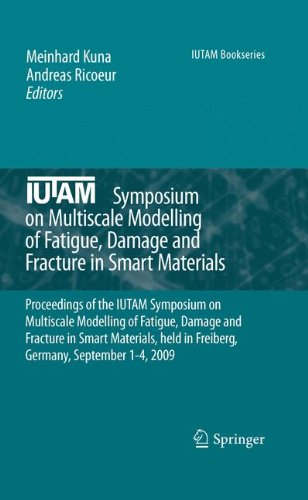

Most ebook files are in PDF format, so you can easily read them using various software such as Foxit Reader or directly on the Google Chrome browser.
Some ebook files are released by publishers in other formats such as .awz, .mobi, .epub, .fb2, etc. You may need to install specific software to read these formats on mobile/PC, such as Calibre.
Please read the tutorial at this link: https://ebookbell.com/faq
We offer FREE conversion to the popular formats you request; however, this may take some time. Therefore, right after payment, please email us, and we will try to provide the service as quickly as possible.
For some exceptional file formats or broken links (if any), please refrain from opening any disputes. Instead, email us first, and we will try to assist within a maximum of 6 hours.
EbookBell Team

4.7
86 reviewsToday, multi-functional materials such as piezoelectric/ferroelectric ceramics, magneto-strictive and shape memory alloys are gaining increasing applications as sensors, actuators or smart composite materials systems for emerging high tech areas. The stable performance and reliability of these smart components under complex service loads is of paramount practical importance. However, most multi-functional materials suffer from various mechanical and/or electro¬magnetical degra¬dation mechanisms as fatigue, damage and fracture. Therefore, this exciting topic has become a challenge to intensive international research, provoking the interdisciplinary approach between solid mechanics, materials science and physics. This book summarizes the outcome of the above mentioned IUTAM-symposium, assembling contributions by leading scientists in this area. Particularly, the following topics have been addressed: (1) Development of computational methods for coupled electromechanical field analysis, especially extended, adaptive and multi-level finite elements. (2) Constitutive modeling of non-linear smart material behavior with coupled electric, magnetic, thermal and mechanical fields, primarily based on micro-mechanical models. (3) Investigations of fracture and fatigue in piezoelectric and ferroelectric ceramics by means of process zone modeling, phase field simulation and configurational mechanics. (4) Reliability and durability of sensors and actuators under in service loading by alternating mechanical, electrical and thermal fields. (5) Experimental methods to measure fracture strength and to investigate fatigue crack growth in ferroelectric materials under electromechanical loading. (6) New ferroelectric materials, compounds and composites with enhanced strain capabilities.